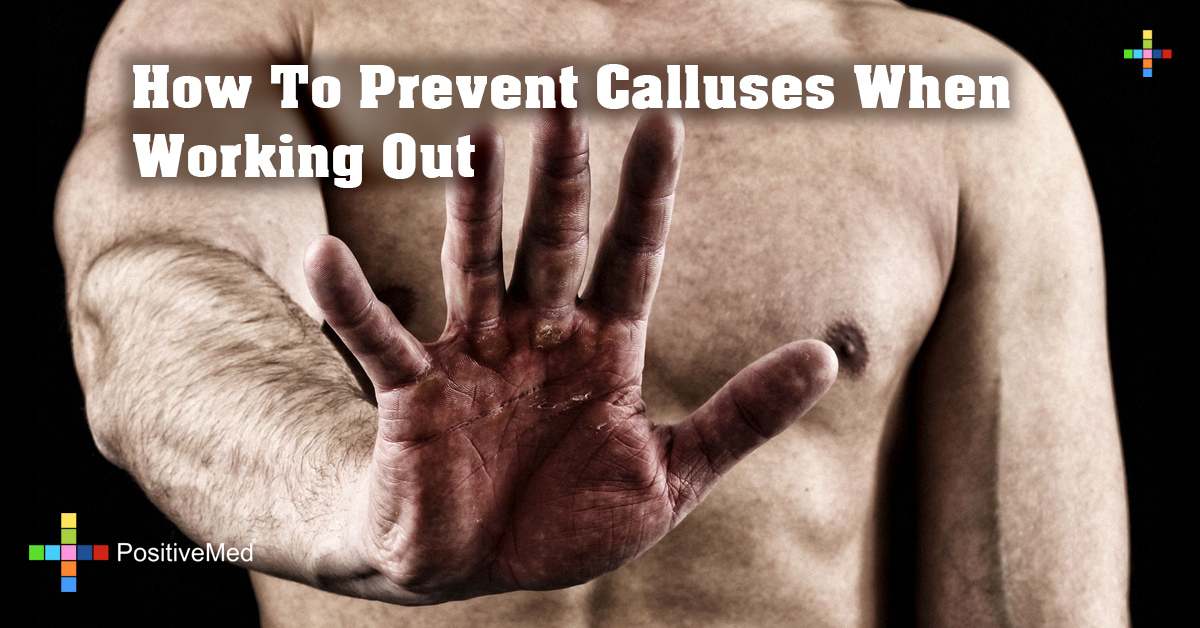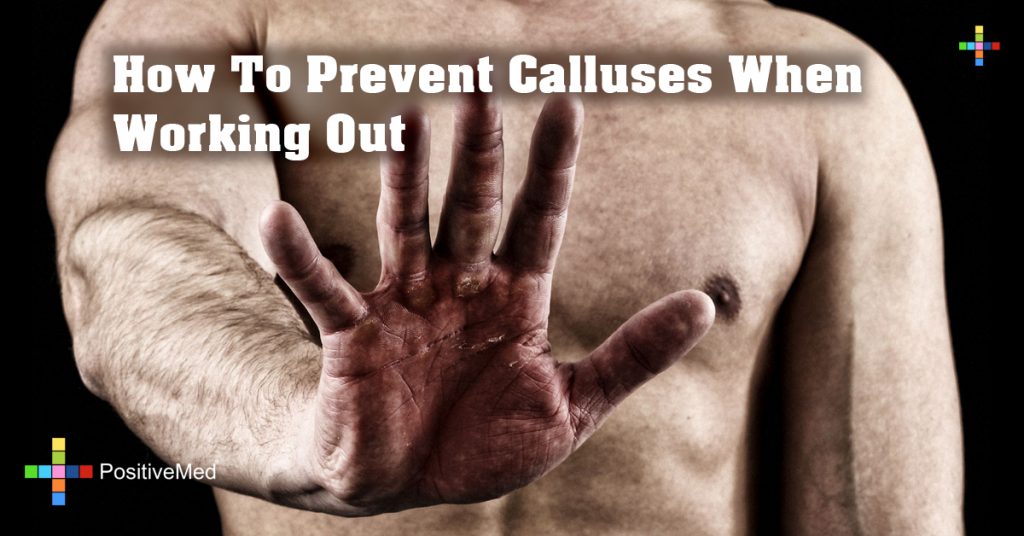
How To Prevent Calluses When Working Out
Calluses are no fun. Yet, every one who lifts weights is going to have to deal with them to some degree. Calluses are simply toughened skin that is caused by friction. When you grab the rough grip on the handles of barbells, dumbbells or kettlebells, that causes the skin on your hands to toughen up and get thicker. The most common place where calluses appear is at the base of the fingers. In this article, we will consider 5 ways to prevent calluses when working out.

Wear Weight Lifting Gloves
Fingerless weightlifting gloves will provide padded leather protection to the palm of your hand when you are gripping the bar. This will effectively minimize callus formation. However, many people do not like to wear gloves when they work out. They find that gloves actually interfere with their natural grip rather than assisting it. This is especially true of people with short fingers. The padding on the palm of the glove prevents the person from being able to wrap their fingers far enough around the bar to get a good grip. This will have an adverse effect on their ability to maintain their grip as they progress through their set.
Even if you don’t have an issue with wearing gloves, they are likely to bunch up when you are gripping the bar. This will lead to pinching and callus formation that is now caused by a combination of skin, bar and leather.
Use Lifting Chalk
One of the main triggers that leads to callus formation is sweat dripping into your palm. Sweat will not only make it harder for you to maintain your hold on the bar, it will also cause you to grip the bar more tightly, leading to callus formation. You can prevent sweaty palms by rubbing weight lifting chalk onto your palms before grabbing the bar. However, you don’t want to put too much chalk on your body. If you, do you will actually increase the amount of friction between your palm and the bar. Between sets, wipe off excess chalk with a towel and be sure to thoroughly wash it all off after the workout.
RELATED ARTICLE: How to Remove Calluses on Feet
Use a Pumice Stone
You can pick up a pumice stone at the cosmetics section of your local drug store. This is a little rough stone that you use to file down the hardened areas of skin that form on your hands when you lift weights. After taking a shower or bath, when your skin is all moist, take the pumice stone and file down the areas of hardened skin that will usually appear at the base of your fingers. This will prevent large calluses from forming and potentially ripping open.
You only need to give your hands the pumice stone treatment once per week for a few minutes.
Don’t Pinch When Gripping
A lot of people could avoid the formation of calluses if they reassessed how to grab hold of the lifting bar. Often,when doing a palms up grip, people will grip the bar in such a way that there is loose, bunched up skin between the bar and the base of the fingers. This is just asking for calluses. A far better way to go is to make initial bar contact with your fingers and then slide them down so that the bar fits snugly into your palm. The bar should sit at the base of your fingers with no pinched skin.

When gripping the bar with a palms down grip, many people will go deep into the palm and then wrap the hand around the bar. However, this is actually forcing the area at the base of the fingers to bend on top, which will lead to pinching. To prevent this, rather than gripping the bar by making initial contact with the palm, make your first contact right on the area where calluses form, that is the base of the fingers. Then wrap the rest of the hand around the bar. Press down on the bar, wrap your fingers around the bar and finally lock your thumb. This only applies, however, to pulling exercises such as deadlifts.
For the exercises where you have a palms down grip and are pressing, such as the military press, you want the weight to sit flush on the palm of the hand.
Pull Up Grips
Grabbing the barbell, dumbbell or kettlebell is not the only way to develop calluses in the gym. If you’re serious about training, then pull ups are going to be a prominent part of your training. Your grip is the vital link on this exercise. Yet, calluses will absolutely destroy your ability to perform the move. You can avoid calluses on pull ups and strengthen your grip to allow you to work your lats more effectively by using pull up grips.
Pull up grips are a combination of fingerless workout glove and wrist wraps. They’ll prevent sweat slippage and friction while not being as restrictive as conventional workout gloves. You can also use pull up grips for your heavy compound lifts such as the deadlift. If you’re interested in using pull up grips to help prevent calluses check out these crossfit gloves by Emerge Fitness, they are the ones I use and I couldn’t be happier.
Don’t Grip the Bar So Hard
A lot of people have developed the habit of gripping the bar so tightly that they are forcing friction. This is especially so when using a kettlebell. Often a person will tighten their grip when doing moves like kettlebell swings and snatches in order to slow themselves down. A looser grip with improved form will do the job far more effectively while saving your hands. Whenever you are gripping the bar, however, be conscious of not over gripping. Not only will it prematurely fatigue your forearms, but it will also increase the likelihood of calluses.
Conclusion
Thickened skin at the base of the fingers is as natural a training adaptation as improved biceps size. That doesn’t mean, however, that you have to suffer with huge calluses, ripped skin and bloody hands whenever you face the weights. By following some basic precautionary steps, re-learning how to grip the bar and improving your exercise technique, you can train without callus pain, allowing you to put 100% effort into causing the muscular pain that will allow you to achieve your gym goals.
Author Bio:
 Jim Roose is a long time fitness enthusiast and former powerlifting coach and gym owner. He recently retired and now blogs and writes about fitness tips and tricks that are based on over 35 years of industry experience.
Jim Roose is a long time fitness enthusiast and former powerlifting coach and gym owner. He recently retired and now blogs and writes about fitness tips and tricks that are based on over 35 years of industry experience.
Disclosure Policy:
This blog is a collaborative blog written by a group of individuals. Full disclosure policy for this blog can be found here






